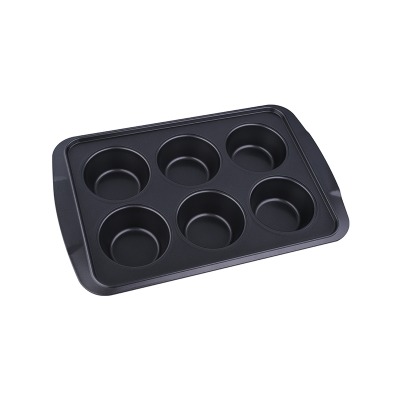Carbon Steel Muffin Pan has gained attention in the contemporary baking landscape as home bakers increasingly seek kitchen tools that balance performance with practical considerations. As baking enthusiasts become more mindful of their kitchen investments, the conversation has expanded to include factors such as material properties, longevity, and environmental impact alongside traditional performance metrics. This shift in consumer perspective has brought renewed focus to the characteristics of carbon steel as a bakeware material.

Material Properties and Baking Performance
The physical characteristics of carbon steel contribute to its functionality in muffin preparation. The material's thermal conductivity allows for relatively even heat distribution during the baking process, which can support consistent browning and texture development. This heat responsiveness also facilitates efficient energy use, as the pan typically requires less preheating time compared with some alternative materials. The rigidity of carbon steel helps maintain structural integrity during repeated use, while the natural non-stick properties that develop over time offer practical benefits for daily baking activities.
Durability and Longevity Considerations
The service life of bakeware represents a growing concern among consumers who value sustainable consumption practices. Carbon steel's resistance to warping at typical baking temperatures contributes to extended product lifespan. With appropriate care, this pan can maintain its functional characteristics through years of regular use. This durability aspect aligns with increasing consumer interest in kitchen tools that offer long-term value rather than requiring frequent replacement.
Adaptation to Contemporary Baking Habits
Modern baking routines often involve varied recipes and occasional high-volume preparation. Carbon Steel Muffin Pan demonstrates versatility across different batter types, from delicate compositions to denser formulations. Its performance characteristics remain consistent whether one is preparing a single batch for family consumption or multiple batches for social gatherings. This adaptability makes it suitable for the evolving needs of today's home bakers, who may alternate between different baking styles and frequencies.
Maintenance and Care Practices
The maintenance requirements of carbon steel bakeware involve considerations that differ from those of other common materials. Proper seasoning procedures help develop and maintain the pan's non-stick properties, while appropriate cleaning methods support preservation of the cooking surface. These maintenance routines, while requiring initial attention, become straightforward with regular use. Many users find that the performance benefits justify the specific care approach, particularly when viewed as part of a broader philosophy of maintaining quality kitchen tools.
Environmental Aspects of Material Selection
The production and lifespan of bakeware materials have environmental implications that some consumers factor into their purchasing decisions. Carbon steel's recyclability at the end of its useful life presents considerations for those concerned with product lifecycle impacts. The material's durability also supports reduced frequency of replacement, potentially contributing to less resource consumption over time compared with less durable alternatives.
Industry Response to Consumer Preferences
Bakeware manufacturers have noted the growing consumer interest in materials that offer distinct performance characteristics and sustainability profiles. This has led to increased availability of carbon steel options across various price points and feature sets. Product development efforts have focused on enhancing the user experience through improvements in surface treatments and ergonomic design elements, while maintaining the fundamental properties that make carbon steel a practical choice for baking applications.
A Considered Choice in Modern Bakeware
Carbon Steel Muffin Pan represents one option among several available to today's baking enthusiasts. Its material characteristics address multiple considerations that contemporary consumers value, from functional performance to long-term usability. As the bakeware market continues to evolve, materials like carbon steel offer alternatives that align with varied baking needs and personal preferences. For those exploring options beyond conventional bakeware materials, carbon steel presents characteristics worthy of consideration within the broader context of kitchen tool selection

 English
English 中文简体
中文简体 Deutsch
Deutsch